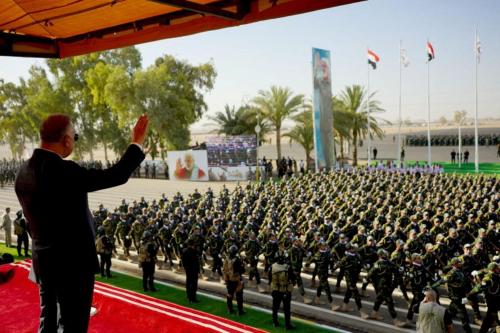INTRODUCTION
In a world marked by change and transformation, the three- decades-long antagonism between Washington and Tehran seems curiously impervious to amelioration or mitigation. The durability of this conflict – which has outlasted all of America’s other old enmities with the exception of Cuba – as well as its perpetual urgency has generated a rich library of official and unofficial policy studies, academic analyses, and high-level task force recommendations. Each has attempted to answer the same question that confronts U.S. policymakers every day: what can be done about Iran?
That something must be done is a matter of widespread consensus, not simply in Washington but within the international community. Thanks to its pivotal location, political legacy, cultural and religious sway, and rich natural and human resource base, Iran inevitably engages vital American interests. Since the revolution, Iran’s policies and actions – its nuclear ambitions, bankrolling of terrorism, assertion of regional primacy, and its repression of its own citizenry – have placed Iran at the nexus of Washington’s most immediate security dilemmas.
The widespread recognition that Washington needs a more effective approach to dealing with the challenges of Iran has produced an array of different approaches, but little apparent progress in conclusively resolving Iranian antagonism and the threat posed to American interests. Nearly every proposed revision to U.S. policy toward Iran has already featured into Washington’s repertoire over the past three decades. Carrots and sticks, engagement and containment, forceful deterrence and fumbling attempts at regime change – all these recommendations have been implemented.
The single greatest enigma in this equation centers on Iran itself. Iran remains the sole state in the world which maintains no direct relationship or communications with the United States, and our efforts to craft an effective policy to influence its leadership are consistently undermined by the profound limitations in our familiarity with contemporary Iran. On the heels of her failed 2006 bid to open negotiations with Tehran on its nuclear program, Secretary of State Condoleezza Rice acknowledged somewhat ruefully that Iran is “a very opaque place.” Asked about Iran’s pattern of defying both logic and American expectations, Rice conceded that the Islamic Republic is “a political system I don’t understand very well,” adding that “one of the downsides of not having been in Iran in—for 27 years as a government is that we don’t really have people who know Iran inside our own system…We’re also operating from something of a disadvantage in that we don’t really have very good veracity or a feel for the place.”1
Understanding Iran represents the seminal challenge for any future American administration trying to “get Iran right,” but our efforts should be humbled by our consistent underperformance in this arena over the past 30 years. While the Islamic Republic may be more accessible than hermetic North Korea and its leadership less capricious than Libya’s Moammar Qaddafi during his prime, Iran’s complex political dynamics and unique governing institutions have generated an often unpredictable course. We did not predict the revolution, nor did we anticipate either the rise of the reform movement through the 1997 election of President Mohammad Khatami or the resilience of regime orthodoxy through the 2005 election of his successor, Mahmoud Ahmadinejad.
Anticipating Iranian responses is a critical component of any U.S. policy option, but one that has particular relevance for diplomacy. A clear understanding of the other side’s interests, motivations and bottom-line preferences is an essential foundation for any successful diplomatic enterprise. And there is every reason to presume that diplomacy will comprise a central component of any new approach to Iran. Despite wide variations in rhetoric and tactics, every American president has pursued some mode of diplomatic engagement with the Islamic Republic. The conspicuous exception to this rule transpired under the current U.S. administration, which, in the aftermath of the first heady successes of its campaign to remove Saddam Hussein and remake the Middle East, took the unprecedented step of rejecting any dialogue with Iran. The abject failure of that approach, and the Bush administration’s own reversal of its stance on negotiations with Iran, makes it almost inevitable that direct engagement will feature into the next administration’s strategy, irrespective of which political party takes the White House in November 2008. This paper seeks to offer some scope for discussion on how Iran might respond to a new diplomatic initiative by considering lessons drawn from Iranian rapprochement in two other key cases, as well as prior attempts at U.S.-Iranian engagement, and concluding with some sense of Tehran’s current views on dealing with Washington.



